Through her tireless advocacy to create a better future for people, other animals, and the planet we share, Dr. Jane Goodall inspired millions around the world with her message of hope through action.
She is best known for groundbreaking studies of wild chimpanzees in Gombe Stream National Park, Tanzania, transformative research continued by the Jane Goodall Institute which is now the longest running wild chimpanzee study in the world.
Jane Goodall was also a UN Messenger of Peace, traveling around the world, writing, speaking and spreading hope. “Until we have peace and harmony with the environment, we will never live in a world of peace.”
When was Jane Goodall born?
Valerie Jane Morris-Goodall was born on April 3, 1934, in London, England, to Mortimer Herbert Morris Goodall and Margaret Myfanwe Joseph, affectionately known as Vanne.
Was Jane Goodall always interested in wildlife?
From earliest childhood, Jane’s mother encouraged her fascination with animals. One of her most beloved companions was a stuffed toy chimpanzee, named Jubilee.
In what her mother referred to as "Jane's first animal research program,” she found Jane in bed with a handful of earthworms, trying to understand how they could possibly move without legs.
By the age of four, having moved to a family farm, she gave her mother yet another scare by hiding in the henhouse for hours, waiting to watch a chicken lay an egg
Young Jane immersed herself in books about wild animals and dreamed of a life alongside African wildlife like Tarzan and Dr. Dolittle.
Why did Jane Goodall go to Kenya?
At the young age of 23, after having spent the past few years as a waitress and secretary, she finally found a way to make her dream a reality.
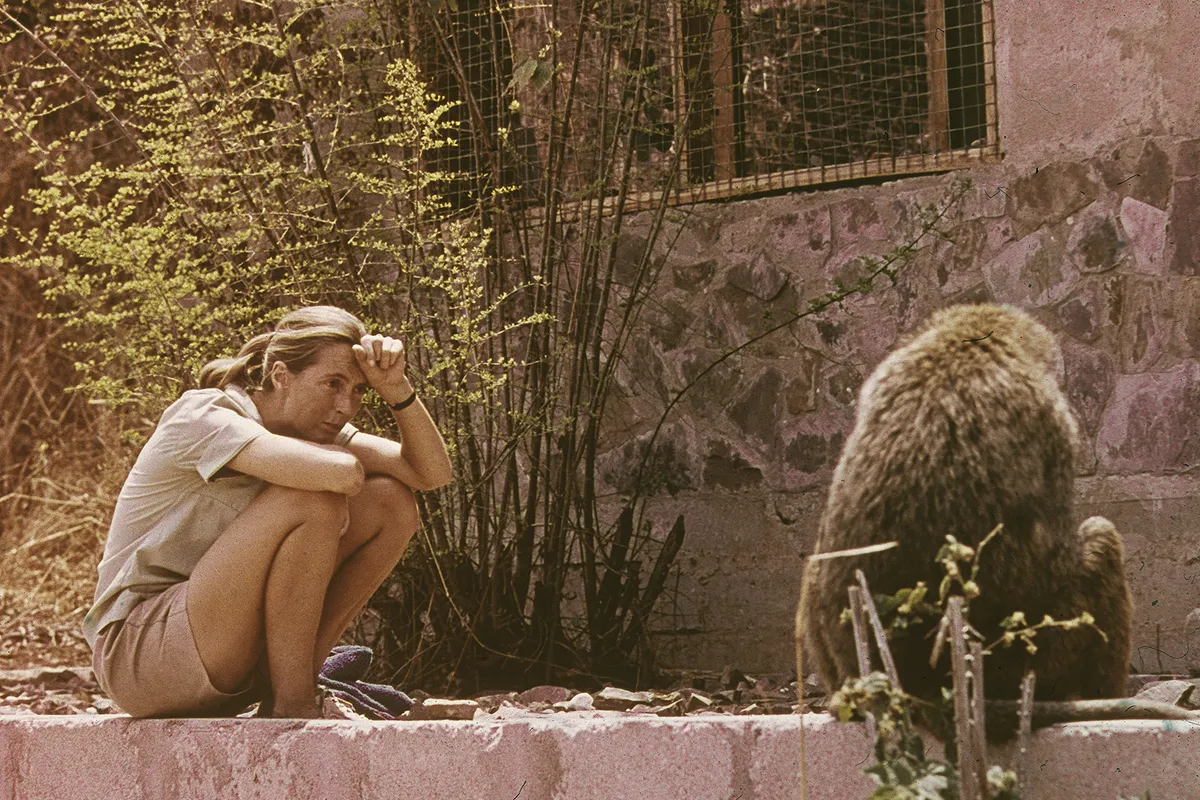
In 1957, Jane eagerly accepted a schoolmate's invitation to the family farm in Kenya. Within a few months of arriving, she met the famed paleoanthropologist, Dr. Louis Leakey.
Dr. Leakey was searching for the right person to study fellow great apes, particularly chimpanzees.
This was not only to better understand these little-known primates, but also to gain insight into the evolutionary past of humans, as chimpanzees and humans share a (most recent) common ancestor some 6 million years ago.
He was drawn to Jane's persistent desire to understand animals and believed that a mind uncluttered by the reductionist thinking of ethologists of the time would yield a fresh perspective.
In July 1960, Jane arrived on the shores of Lake Tanganyika in what is now Gombe National Park, Tanzania, East Africa.
Equipped with little more than binoculars, a notebook and her fascination with wildlife, Jane Goodall ventured into what was then called the Gombe Stream Chimpanzee Reserve – embarking on a journey that would redefine the relationship between humans and other animals and ultimately help shape the burgeoning strategies of world conservation into the 21st century.
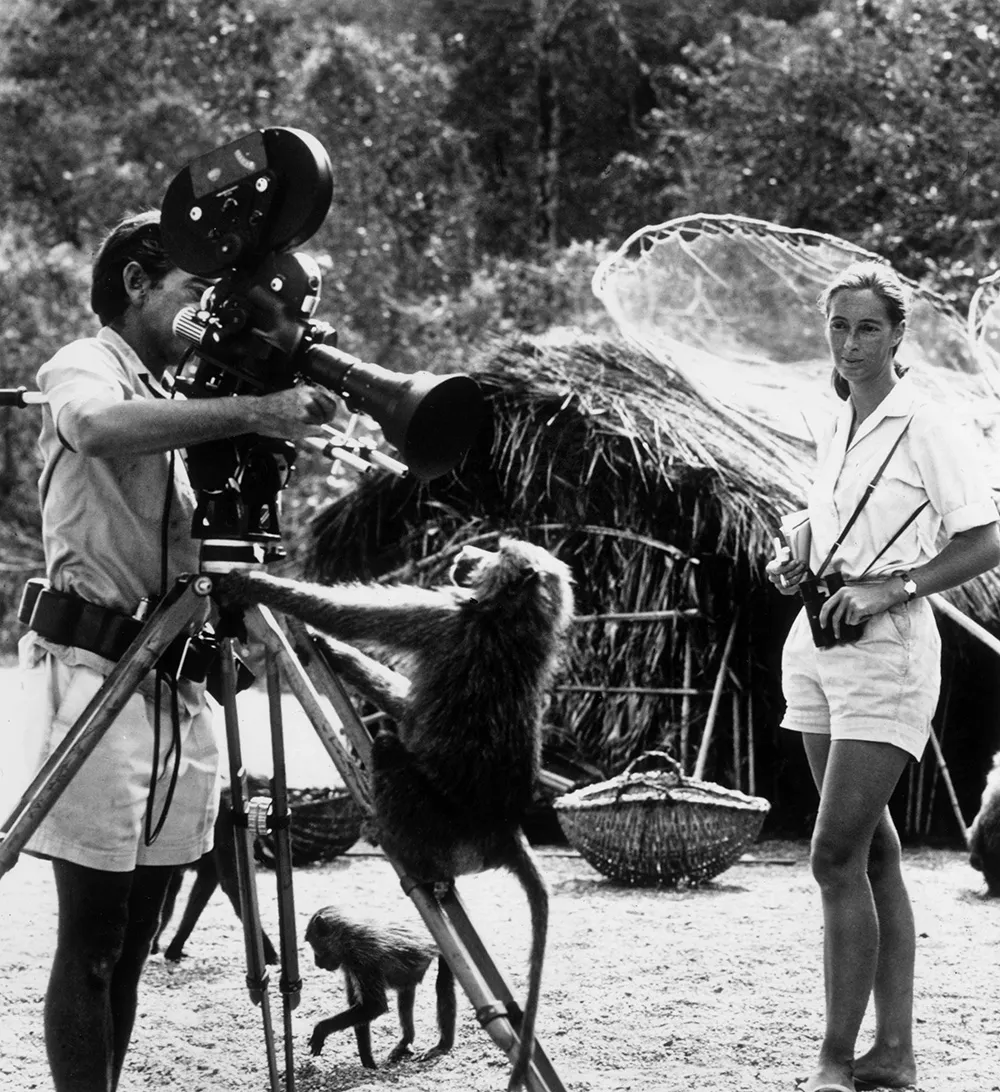
She took an unorthodox approach, immersing herself in the chimpanzee’s habitat. After months of trying to gain their trust, she was able to experience their complex society as a neighbour, rather than a distant observer.
She then further defied scientific convention by giving them names instead of numbers. She came to understand them not only as a species, but as individuals with personalities, complex minds, emotions, and long-term bonds.
One day, in October 1960, she saw the chimpanzee she named David Greybeard use grass stems to fashion tools for fishing termites from their nest.
Up until that revelatory moment, mainstream scientists thought humans were the only species to make and use tools, having defined us as “Man the Toolmaker.”
Her insights rocked the scientific world, prompting Dr. Leakey to proclaim, "Now we must redefine man, redefine tool, or accept chimpanzees as humans!"
Her published findings on the tool-making practices of chimpanzees remain one of the most highly regarded observations in the world of animal behaviour research.
During her first years at Gombe, she also observed several other behaviours that transformed our understanding of chimpanzees.
This included that they 1) Can be compassionate and altruistic, 2) Will hunt and eat meat (though it is less than 3% of their diet), 3) Can engage in “primitive warfare,” and 4) Have lasting bonds between family members (all species have strong mother-infant bonds).
In 1961, Jane entered Cambridge University as a Ph.D. candidate, only the 8th person to be admitted without an undergraduate degree.
She repeatedly returned to Gombe to continue her observations throughout her time at Cambridge, before earning her Ph.D. in ethology (animal behavior) in 1966 and continued her research in Gombe.
Revolutionising primatology and conservation
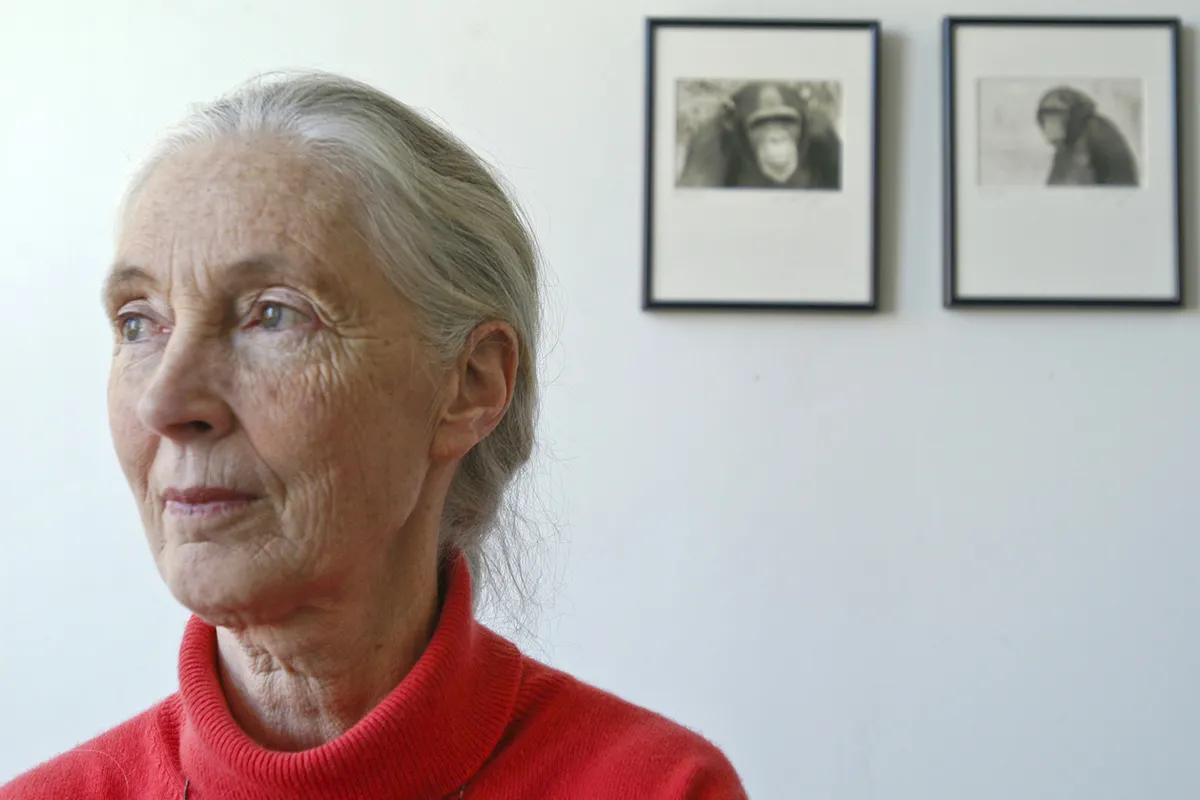
Jane's field research in Gombe revolutionized the field of primatology. In one of the longest-running field studies of any species, she and her students, further documented that chimpanzees have distinct personalities, minds and emotions, and form lasting and complex relationships.
Over the years, her work continued to yield surprising insights. In 1965, she established the Gombe Stream Research Center, which became a training ground for students interested in studying primates, ecology, and more.
Today, it hosts a skilled team of researchers from around the world and dedicated field assistants comprised entirely from local Tanzanians.
The research center at Gombe also attracted many women, who were nearly absent from the field when she began.
''Jane Goodall's trailblazing path for other women primatologists is arguably her greatest legacy," said Gilbert Grosvenor, chairman of The National Geographic Society.
"During the last third of the twentieth century, Dian Fossey, Birute Galdikas, Cheryl Knott, Penny Patterson and many more women have followed her. Indeed, women now dominate long-term primate behavioural studies worldwide."
Was Jane Goodall married and did she have children?
On her way to becoming the world's leading ethologist and activist, Jane had a son, Hugo, in 1967 with her first husband, Dutch nobleman wildlife photographer Baron Hugo van Lawick. In 1975, she married Derek Bryceson, director of Tanzania's National Parks, who died in 1980.
Perhaps most significantly, Jane's work engaged a global audience, providing a window into the world of chimpanzees to a public with a deep curiosity about humankind's closest relatives.
Through her books, particularly In the Shadow of Man and Through a Window, people around the world came to be on a first name basis with the chimpanzees of Gombe.
The legendary Flo and her many offspring became so internationally revered that when Flo died, The London Times published an obituary.
Jane's eloquent ability to raise public awareness and understanding would become instrumental in her work to save chimpanzees and other species from extinction.
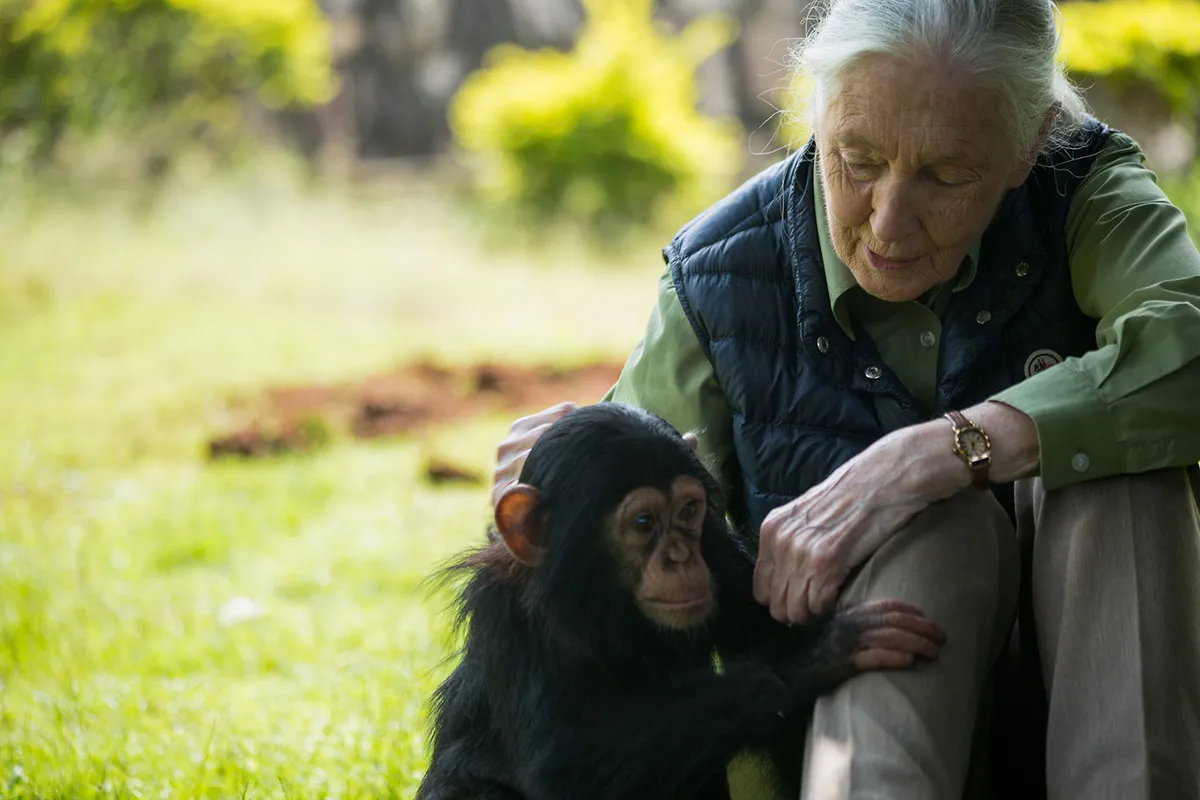
When did she launch the Jane Goodall Institute?
In 1977, Jane established the Jane Goodall Institute (JGI), which advances her vision and work around the world and for generations to come.
JGI continues and expands upon essential science at Gombe Stream Research Center, now the home of the longest running wild chimpanzee study in the world.
It has also become a global leader in the effort to protect chimpanzees and their habitats through community-led conservation.
The institute advances innovative applications of science and technology, best practices in animal welfare, as well as youth empowerment through its Roots & Shoots program, created in 1991.
Roots & Shoots provides the resources to encourage and motivate young people to take action on issues that matter to them.
Today, the tools and support offered through the JGI program empower youth in all 50 states and over 60 countries to use their voices and ideas to address the issues that matter most to them in their communities.
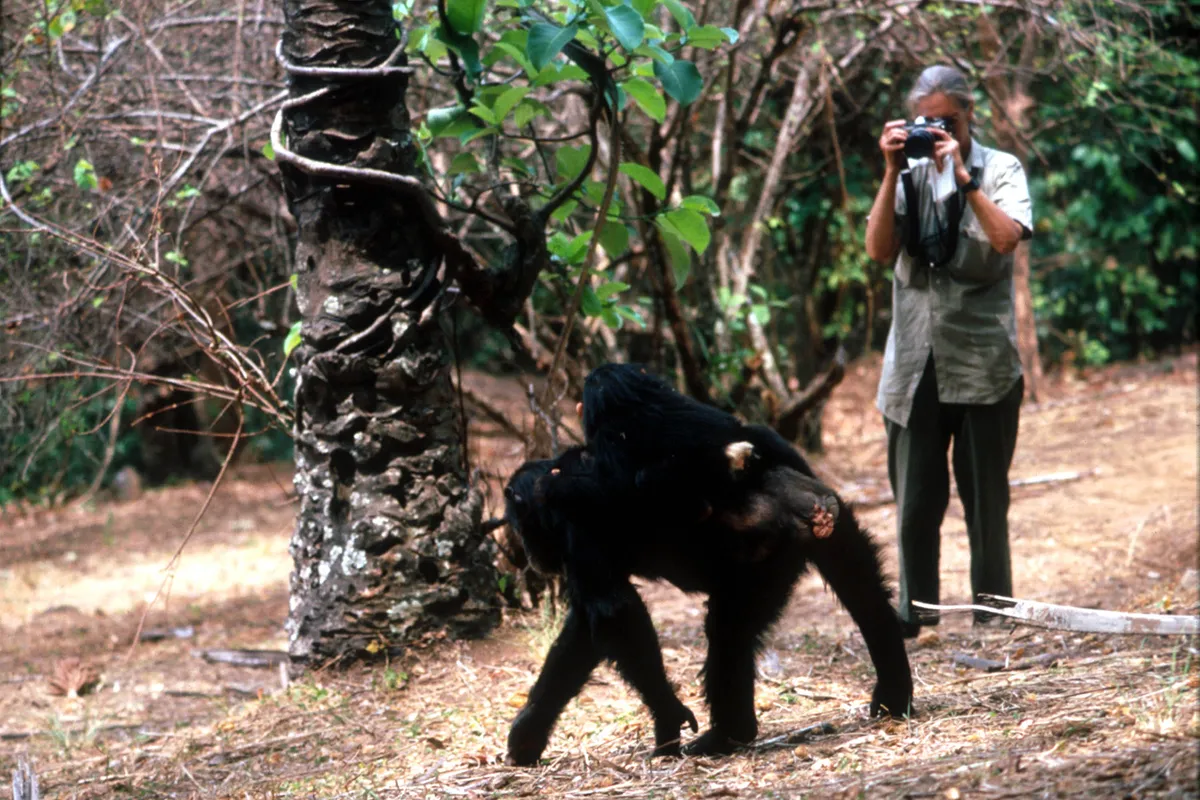
In the late 1980s, upon attending the first ever Chimpanzees in Context symposium, Jane was witness to the accelerated pace of deforestation and declining chimpanzee populations beyond Gombe, and realised she had to leave her beloved Gombe to save chimpanzees from extinction.
She continued this work right up until her death in 2025, through sanctuaries, research sites in Uganda and JGI Spain’s site in Senegal and even fought to end the use of chimpanzees in medical research. Before COVID-19, Jane traveled on average 300 days per year.
JGI even introduced ‘Virtual Jane,’ allowing Jane to successfully connect with audiences through remote lectures, recordings, and her podcast, the Jane Goodall Hopecast.
Jane emphasised the interconnectedness of all living things and the collective power of individual action, urging her audiences to recognise their personal responsibility and ability to affect change.
As she once said, “Every individual has a role to play. Every individual makes a difference."
When did Jane Goodall die?
Jane Goodall died on 1 October 2025 at the age of 91, while in Los Angles as part of a speaking tour. A statement from the Jane Goodall Institute said she died peacefully in her sleep.
Writings of Dr. Jane Goodall
Jane was the author of several books that have engaged an international readership.
Her titles include two overviews of her work at Gombe, In the Shadow of Man and Through a Window: My Thirty Years with the Chimpanzees of Gombe.
As well as two books of her collected letters, Africa in my Blood and Beyond Innocence: autobiographies in letters, her bestselling autobiography, Reason for Hope and more recently, Harvest for Hope, Hope for Animals and their World, and Seeds of Hope: Wisdom and Wonder from the World of Plants.
Published in 1986, The Chimpanzees of Gombe: Patterns of Behaviour, is recognised as the definitive work on chimpanzees. In 2009, she released Hope for Animals and Their World: How Endangered Species Are Being Rescued from the Brink, about the successful efforts of conservationists determined to save endangered species.
Her many children's books include My Life with the Chimpanzees and Chimpanzees I Love: Saving Their World and Ours, and her last book, The Book of Hope: A Survival Guide for Trying Times, was published in 2021.
What recognition did Dr. Jane Goodall receive?
Honours
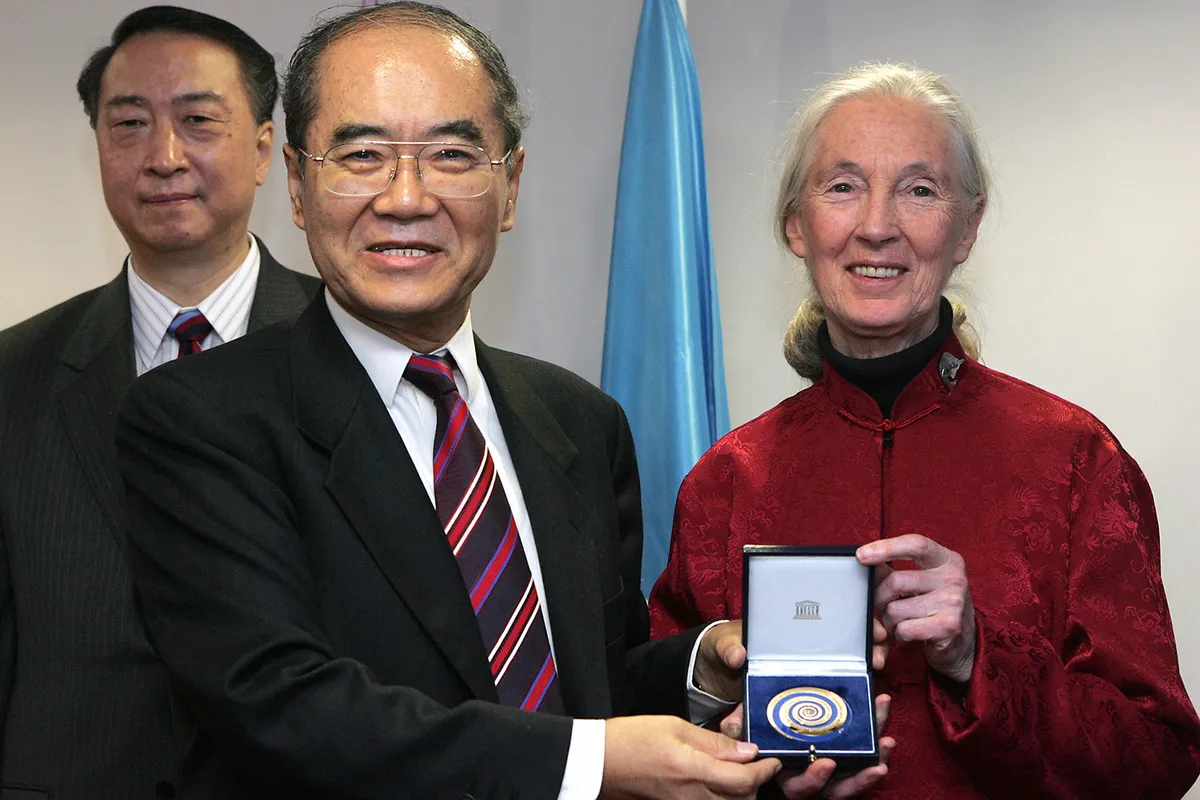
Jane was recognised as a global icon and was the recipient of numerous honours, including the Medal of Tanzania, the National Geographic Society's Hubbard Medal, Japan's prestigious Kyoto Prize, the Prince of Asturias Award for Technical and Scientific Research, the Benjamin Franklin Medal in Life Science.
In 1987 Mendel Medal, the UNESCO 60th Anniversary Medal, the Gandhi/King Award for Nonviolence, and the Manhae Grand Prize for Practice. Most recently, she was awarded the esteemed Templeton Prize, as well as the Tang Prize.
In April 2002, Secretary General Kofi Annan named Jane a United Nations Messenger of Peace. In a 2004 ceremony at Buckingham Palace, Prince Charles invested Jane as a Dame of the British Empire. In 2006, Prime Minister Dominique de Villepin presented Dr. Goodall with France's highest recognition, the Legion of Honour.
Honorary doctorates
She received honorary doctorates from 57 universities including University of St. Andrews, Cambridge, Goldsmiths, University of London; Utrecht University, Holland; Ludwig-Maximilians University, Germany; Stirling University, Scotland; Providence University, Taiwan; University of Guelph and Ryerson University in Canada; and Buffalo University, Tufts University and many universities throughout the globe.
Television and film
Jane's life and work are the subject of numerous television documentaries, as well as the 2002 film Jane Goodall's Wild Chimpanzees, the 2010 documentary, Jane's Journey, the 2017 National Geographic documentary JANE, and most recently the 2021 documentary Jane Goodall: The Hope.
Discovery Channel's Animal Planet has produced a number of features on Jane, including Jane Goodall's Return to Gombe, Jane Goodall's State of the Great Ape, When Animals Talk, Jane Goodall's Heroes, and Almost Human.
For a full list of Jane's honours and honorary doctorates, read her CV here.
Main image: Dr Jane Goodall at Taronga Zoo on October 11, 2008 in Sydney, Australia. © Robert Gray/Getty




